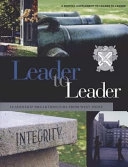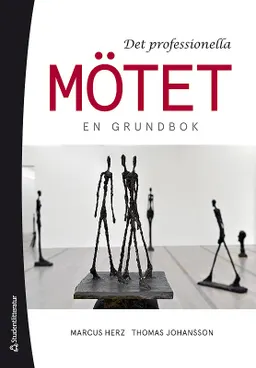Introduction to this Special Supplement on Leadership Breakthroughs from West Point Leader to Leader has published many outstanding leaders and thinkers—from Peter Drucker, Herb Kelleher, and Rosabeth Moss Kanter to Max De Pree, Margaret Wheatley, and Hugh Price. The contributors to this special supplement to Leader to Leader are not as well known, but in our estimation, they are just as exemplary—and their dedication and faithful service to our nation are inspirations. In this special supplement, we are honored to present articles from Army leaders who teach in the Department of Behavioral Sciences and Leadership at West Point. They are all active duty officers who offer us firsthand accounts of what Army leadership means to them. Although they make references to war, life-and-death decisions, and heroic actions, their real focus is on quiet leadership, mission, values, taking care of people, organizational learning, leading change—and many other topics that cut across all organizations, public and private.
This special supplement is not intended to hold up the U.S. Army as a perfect institution—indeed as you read these pages you will see that these Army leaders and teachers are very much aware of what the Army can do to improve and of what they can do to help lead those improvements. Our intent is simply to hold up the courageous leadership that the Army teaches and practices. May it enlighten and inspire us all.
A Look Ahead
Colonel Thomas Kolditz leads off with his deeply insightful article, “The In Extremis Leader.” In extremis means “at the point of death.” Kolditz has conducted two years of research on leaders who confront situations that are life-threatening, people such as police officers, firefighters, soldiers, and mountain guides. “For those of us who lead professionally,” he writes, “a look at in extremis leadership can be a magnifier, adding clarity and detail to what we already sense—that leaders can make anything possible, and without leadership, even basic tasks can seem insurmountable.”
In “How We Treat Our Foot Soldiers,” Captain Doug Crandall shatters conventional wisdom—uncritically accepted outside the military—about the way foot soldiers are treated by their superiors. Crandall’s account will help open eyes and perhaps give you cause to examine how your organization treats its frontline employees.
Major Brian Tribus follows up on Crandall’s theme in his article, “Making Personal Connections with Your People.” He explains three rules he follows in his own leadership: know what it’s like to be a member of your own organization, control your emotions, and know your people. The rules are simple, but following them demands effort. The payoff, however, can be enormous, as Tribus shows.
Every leader wants followers who are committed to the team and the larger organization. Major Todd Woodruff explains how the Army develops commitment even while placing extraordinary demands on solders—demands that take soldiers away from their families and place them in extreme danger. In “The Power of Caring in Developing Commitment,” Woodruff explains how the Army focuses on families, not individuals, and how this engagement helps generate commitment.
In “Quiet Leadership,” Major Eric Weis portrays leaders who possess the ability to impart a clear intent, who are willing to examine multiple perspectives, who display a humble fortitude, and who have a genuine desire to see their organization perform above expectations. This sort of leadership has the power to achieve almost anything.
In the Army, senior leaders understand that the decisive point of an operation will most likely happen at a time and place far from headquarters. Regardless of how much planning goes into an operation, they know that the people who are actually on the ground as events unfold must make decisions that spell the difference between success and failure. How do senior leaders prepare those on the front line so they make the correct decisions? In his article, “Making Values-Based, Mission-Focused Decisions,” Major Chip Daniels explains the Army’s approach—one that is applicable to civilian organizations as well.
In today’s fast-paced world, leaders in all three sectors realize the importance of building learning organizations. The Army is no exception. As Major Patrick R. Michaelis and Major Everett S. P. Spain write, “The cumulative effect of giving everyone in an organization the capacity to rapidly share near real-time lessons about the competition, situation, and themselves—and then incorporating this capacity into each leader’s individual decision-making cycle, becomes a created comparative advantage.” In their article, “Knowledge Shared Is Power,” they present an innovative, Internet-based knowledge-sharing technology that the Army’s 1st Cavalry Division has deployed in Iraq. Those who think that innovation is best expressed in the private sector will be surprised.
“Army leaders leverage culture,” Major Remi Hajjar writes. “They know why it is important to take time to analyze a unit’s culture and then to form a plan that molds culture to accomplish the institution’s mission.” In “Leveraging Culture to Lead Effectively,” Hajjar shows why the Army’s approach to shaping culture is so powerful and how it can be applied in civilian organizations in all three sectors.
If, like many, you believe that we all have the responsibility to make the world a better place, it means that we all have a responsibility to take action, to lead beyond our formal role in our organizations and communities. In “Leading Beyond Your Formal Sphere of Influence,” Major Everett S. P. Spain explains how he teaches West Point Cadets to do just this. His insights are useful for us all.
In the Epilogue, we are honored to present an interview with Lieutenant General William J. Lennox Jr., the superintendent of the U.S. Military Academy at West Point. General Lennox’s thoughtful discussion of leadership and leadership development demonstrate that effective leaders never stop learning and growing.
Acknowledgements
Civilian control of the military is established in the Constitution and deeply embedded in Army doctrine. The Army carries out the decisions of civilian policymakers in the executive branch. Whether we agree or disagree with the political decisions that send the Army off to war, all Americans certainly are profoundly grateful for the dedication and selfless service of those who put their lives on the line in our armed forces. And at the Leader to Leader Institute, we deeply appreciate the West Point contributors to this special supplement of Leader to Leader. Colonel Thomas Kolditz, the head of the Department of Behavioral Sciences and Leadership, was very helpful every step of the way in preparing this special supplement, as was professor Donald Campbell—and we thank them both. We also want to thank Larry Olson, vice president of marketing at John Wiley & Sons, for his inspiration and support in helping us make this special supplement a reality.
Finally, please note that the views expressed in these articles are those of the respective authors and do not reflect the official policy or position of the U.S. Military Academy, the Department of the Army, the Department of Defense, or the U.S. government.
Åtkomstkoder och digitalt tilläggsmaterial garanteras inte med begagnade böcker





















